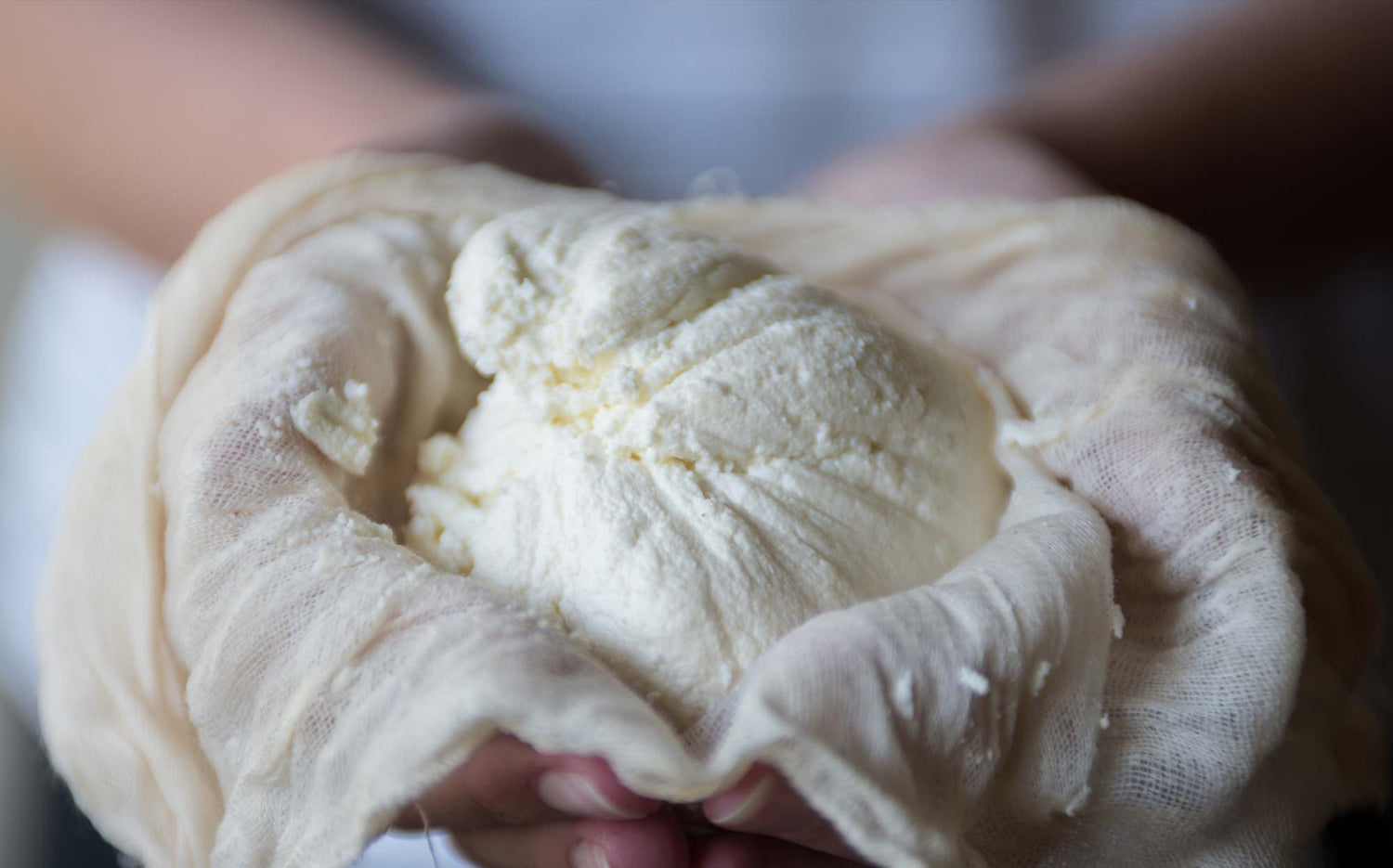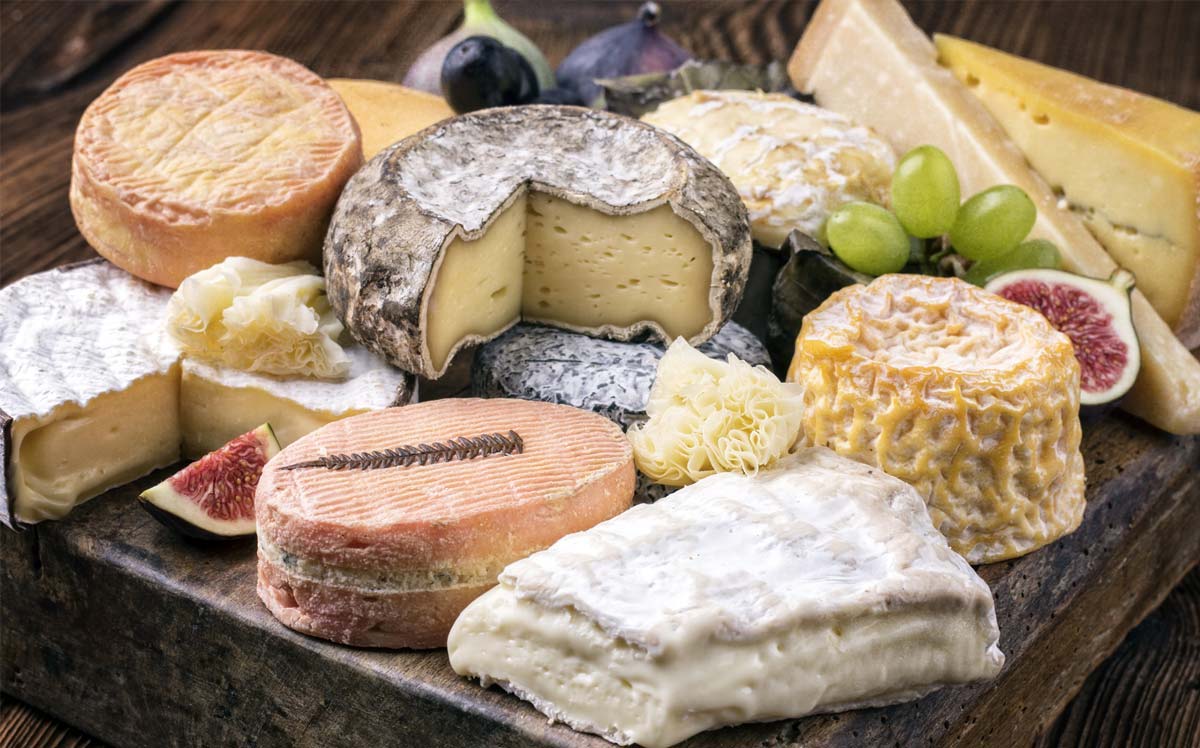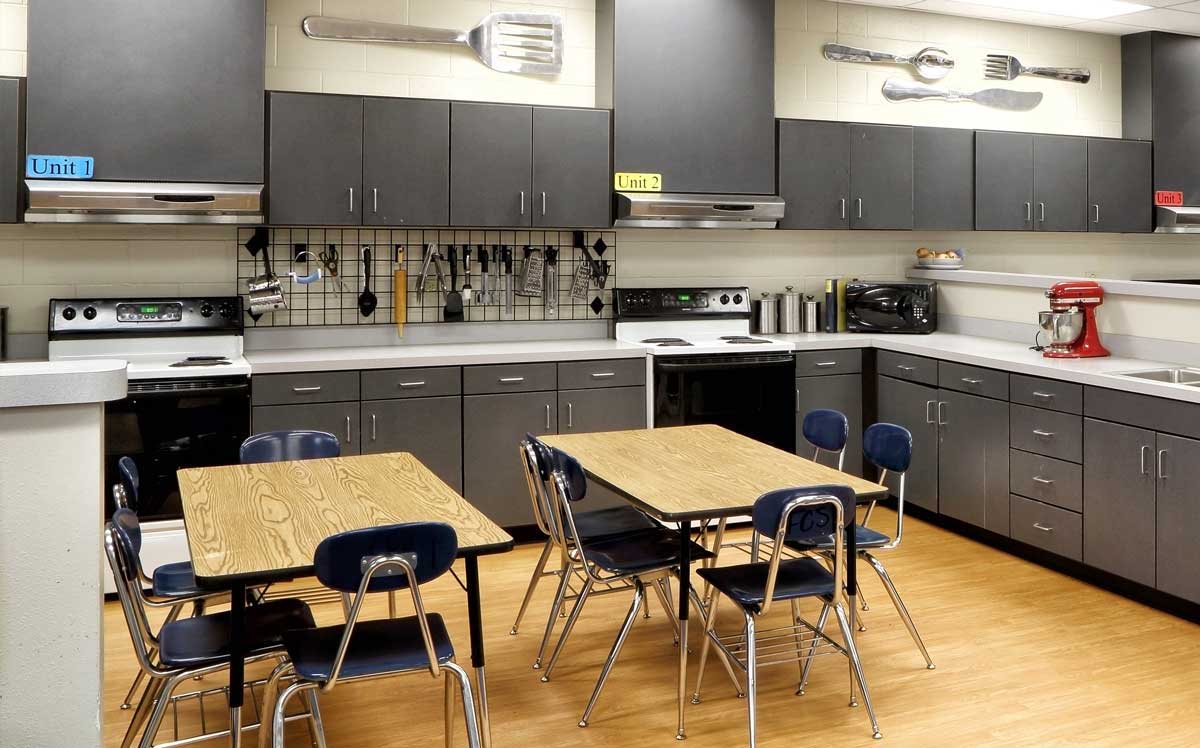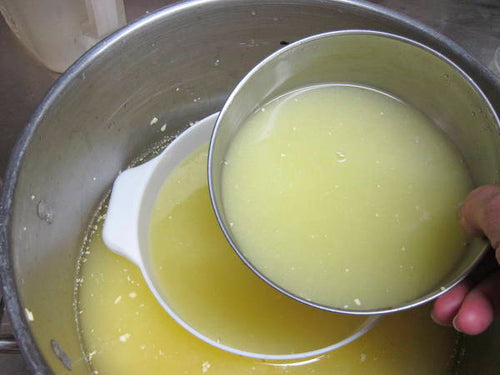This Article was Contributed by Laurie Higgins
Quick Tips for Home Cheese Making
Quick Tips for Home Cheese Making
- Make sure you have a reliable dairy thermometer.
- Stainless steel pots and utensils are best, but glass and unchipped enamel also will work. Never use aluminum.
- Running an ice cube on the bottom of the pot before adding the milk will prevent milk from scorching.
- When cleaning any utensil used with milk, rinse it first with cold water to remove all residue, then wash as usual. Hot water will cook the milk onto the utensils, which could introduce bacteria the next time you use them.
- Cheesecloth from the grocery store has too large of a weave. To avoid losing curds, use only fine-weave cheesecloth or butter muslin.
- Butter muslin can be reused. Rinse it with cold water, then wash immediately. Occasionally it should be boiled with baking soda to keep it fresh and clean.
- Cheese cultures and rennet tablets will keep for about three months at room temperature, a year in the freezer.
- If the only milk you can find is ultra-pasteurized, you can substitute powdered milk and cream to make mozzarella. Mix one gallon of powdered milk with water and allow it to reconstitute for 12 hours. Add 12 ounces of heavy cream or 16 ounces of half-and-half, and proceed according to recipe.
- Leftover whey is delicious and can be used to bake bread, as soup stock or served over ice with mint leaves.
Learning to Make Cheese
My husband and I discovered artisan cheese two summers ago at a farmer's market in Londonderry, Vt.
There we bought a Camembert-style soft-ripened cheese made from sheep's milk that we simply fell in love with. Its rich, buttery flavor was so divine that the following summer we set out to find Woodcock Sheep Cheese Farm in Weston, Vt. and buy some more. With only the vaguest idea where the farm was located, we drove winding country roads looking for sheep.
The process builds upon techniques described in Saint Maure de Touraine Cheese Making Recipe.
Our persistence met with success, and our timing was perfect. A summer intern was just about to begin milking the sheep and happily sold us another wheel of the ''Summer Snow'' cheese.
So I was thrilled (and my husband was jealous) when I had an opportunity to attend a hands-on workshop, hosted by The Lamb and Lion Inn, to learn how to make my own cheese with Ricki Carroll, self-described cheese queen of New England. If youre interested in experimenting with unique cheese varieties, the Cardoona cheese made with flowers offers a fascinating approach. The Cardoona Cheese Making Recipe Instructions expands on this concept. For a more detailed approach to the cheese making process, you can explore the Raffine Cheese Making Recipe Instructions, which outlines the steps for acidifying and heating milk, ensuring a successful curd formation. My enthusiasm for this endeavor was met with skepticism by everyone I told. My son put it the most succinctly. ''Why would you make cheese when you can buy it in the store?'' he asked.
The answer is, for the sheer creative fun of doing something most people wouldn't dream of doing. Or would they? When I arrived at Warren Hall at the Unitarian Church in Barnstable Village for the workshop, 40 other people were just as excited as I was.
There were home chefs, restaurant owners, artists and teachers of cooking classes. They all loved cheese and most of them loved to cook, or at least eat.
Pete Ardito, an operating-room nurse at Cape Cod Hospital, took the course because he loves to cook. ''I cook for friends and parties, and I just decided this would be fun. I've also taken cooking classes in Tuscany and this just fits right in,'' he said.
Tom Flaherty from Scituate was inspired to learn how to make cheese by his neighbor, a retired man who raises goats.
Susan Tomasian once cooked at Oleana in Cambridge. Now she and her partner, T.J. Walton, live in Provincetown and cook for pleasure. ''We cook for our friends all the time and we just thought we could impress them with something like this,'' Walton said.
For the workshop, we were organized into four groups, each gathering around a long table with all the supplies to make farmhouse cheddar waiting in the center. While this is the easiest cheddar to make, it still requires many steps that were timed throughout the day. The cheese wouldn't be ready to eat for at least eight weeks.
''We're not going to make perfect cheese today,'' Carroll cautioned. ''But it will familiarize you with the process so you know what you are doing at home.''
In a slightly whirlwind fashion, Carroll proceeded to show us how to make cheese after cheese, with her partner, Jamie Eckley, prepping, washing equipment and handing her whatever she needed.
A Tight Schedule
Each cheese has its own recipe and special instructions, but the basic formula for most cheeses is to add a culture, rennet or an acid to separate the curds (or solids) from the whey (the leftover liquid).
While the milk for our cheddar was setting to form curds, Carroll moved on to the next cheese, Queso Blanco, a Latin American white cheese that is firm with a bland sweet flavor. Because it doesn't melt when heated, it can be used like tofu in stir-fry recipes. It is the simplest cheese to make at home since it only contains two ingredients: milk and vinegar.
A sweet and slightly pungent aroma wafted from the pan as the group crowded closer to watch Carroll make Queso Blanco.
''We're looking for a clear separation of curds and whey,'' Carroll explained as she slowly raised the temperature to form more curds while still stirring so the milk wouldn't scorch. Meanwhile, Eckley lined a stainless steel bowl with cheesecloth and handed it to Carroll.
''When you ladle the curds, do it gently so you don't pour whey on the curds and melt them,'' she said, lifting curds that looked like soft ricotta and placing them in the bowl.
Then you tie opposite ends of the cheese cloth together and hang the cheese to drain (a bungee cord on a cabinet handle works beautifully), leaving the bowl underneath.
On to the whole milk ricotta, which uses rennet, an enzyme that comes from the stomach of calves, to coagulate the milk. As the curds once again formed on the top, they were ladled into a butter muslin-lined colander. The hot ricotta tasted creamy and delicious.
The mozzarella was incredibly simple but easily had the most dramatic presentation. Carroll added 1/4 teaspoon of citric acid to a gallon of milk and heated the mixture to 88 degrees, before adding 1/4 teaspoon of liquid rennet and stirring gently. In about five minutes, the curds had set and she ladled them into a bowl and pressed them with her hand to remove all extra whey.
Next, she broke off a piece of the cheese and softened it in a pan of water that was about 185 degrees until the cheese was soft, shiny and pulled like taffy.
Once it was perfectly smooth, she put the cheese in a bowl of ice water to set it and repeated the process with the rest of the mozzarella. Very impressive and very tasty.
The whole time she was cooking, Carroll passed out tidbits of information, stories about cheese and tips to make the process easier.
Every Cheese is Different
'Every cheese turns out differently,' Carroll said, 'because every milk is different - even those on the grocery store shelf come from different animals, different times of year. There are a lot of variations.'
Because of that, she recommends home cheese-makers keep a log of weather conditions like heat and humidity, adjustments to the recipes, and type of milk used to see what goes right or wrong.
''That's how you become the artist and cheese becomes an artisanal thing,'' she said.
Any type of milk can be used for most cheeses.
But milk that is ultra-pasteurized will not work for some recipes - mozzarella especially - because the protein is denatured by the high heat treatment of the milk, causing it to break instead of stretch.
Since dairies aren't required to inform customers that the milk is ultra-pasteurized, the best way to check is to call the dairy and ask them what temperature they use to pasteurize. Anything pasteurized over 172 degrees is too hot, and buying organic is no guarantee.
Cheese Making is a Way to Store Milk
Since 1978, Carroll has taught literally thousands of people how to make cheese - usually in her home kitchen in Western Massachusetts. She and her husband, Robert Carroll, decided to make cheese after the two goats they got from a neighbor grew to a herd of 15 goats, each producing a gallon of milk a day.
'Cheese is a way of storing milk,' she said.
They did research and experimented on their own, and then decided to visit England to learn from an expert how to make a good product. After their trip, they began teaching workshops - mostly to people who had surplus milk from their own animals.
In the meantime, they started the New England Cheesemaking Supply Company and wrote a book, 'Cheesemaking Made Easy,' (now revised with the title 'Home Cheese Making').
In 1980, Carroll took over the business, which has grown to include mail-order supplies.
'Ten or 11 years ago, the business totally changed because of the Internet,' she explained. 'The business changed and so did the workshops. I realized people could not get raw milk, and I changed the workshop so people could make cheese with store-bought milk so people could go home and make cheese.'
Inspired. I headed home to make cheese.
Here are some simple recipes that don't require special ingredients.
Recipe for Ricotta
- 1 gallon milk
- 1 teaspoon citric acid
- 1 teaspoon cheese salt (or kosher salt)
- Pour milk into a non-reactive pot. Add 1 teaspoon of citric acid and 1 teaspoon of salt into the milk and stir.
- Heat milk to 195 degrees. Stir often to avoid scorching.
- As soon as the curds and whey separate, turn off the heat. Allow to sit undisturbed for 10 minutes.
- Line a colander with butter muslin. Ladle hot curds and whey carefully into the cheesecloth. Tie the cheesecloth into a bag and hang the cheese to drain for one hour.
- After draining to the consistency you prefer, the cheese is ready to eat. It makes 1 3/4-2 pounds and will keep for up to two weeks in the refrigerator, or it may be frozen.
Recipe for Queso Blanco
- 1/2 gallon milk
- 1/4 cup vinegar (apple cider vinegar adds a nice flavor)
- Heat milk to 185 degrees. (You may put the pot directly on the burner if you stir to avoid scorching.) When the temperature reaches 185 degrees, slowly stir in the vinegar. As you pour and stir, raise temperature to 200 degrees.
- You'll see the milk starting to coagulate. Keep adding vinegar a little bit at a time, stirring slowly until the milk is completely curdled and you can see the separation of curds and whey.
- Pour the curds into a colander lined with butter muslin.
- Tie up the four corners of the cloth and hang the bag to drain for a couple of hours or until it stops dripping.
- When the draining stops, you may cut the curd into 1-inch cubes or slices and store them in a covered container in the refrigerator.
- The queso blanco can be marinated in a flavor of your choice and then used in place of tofu in your favorite stir-fry recipe












































































































































